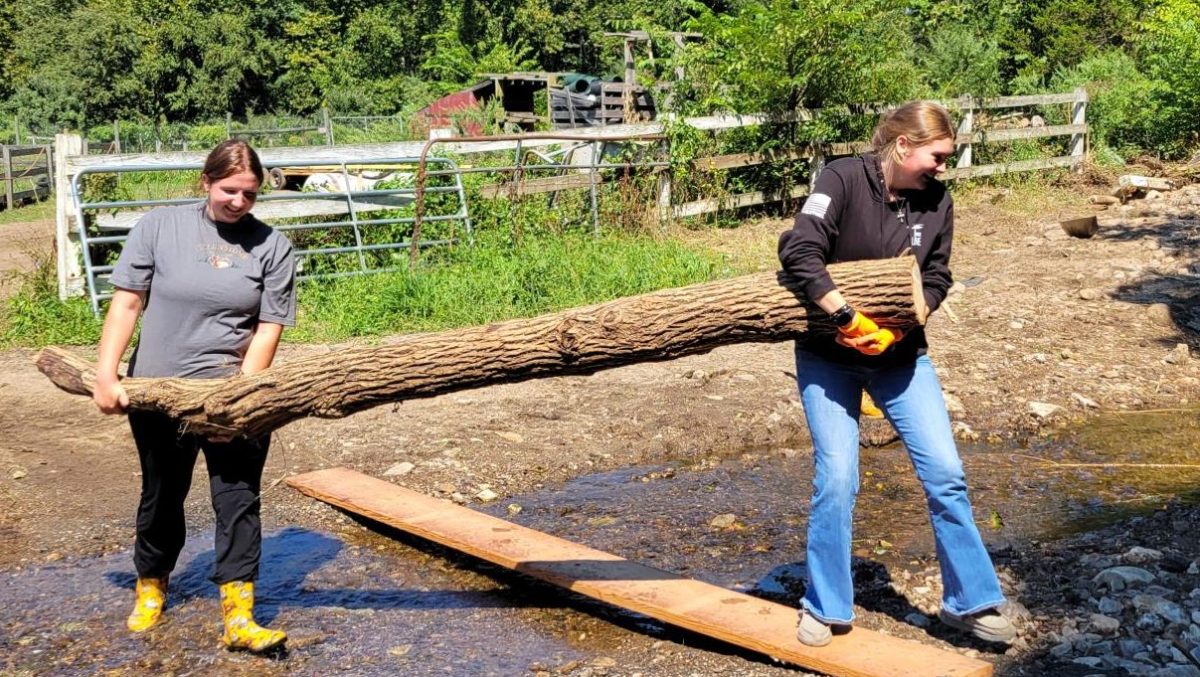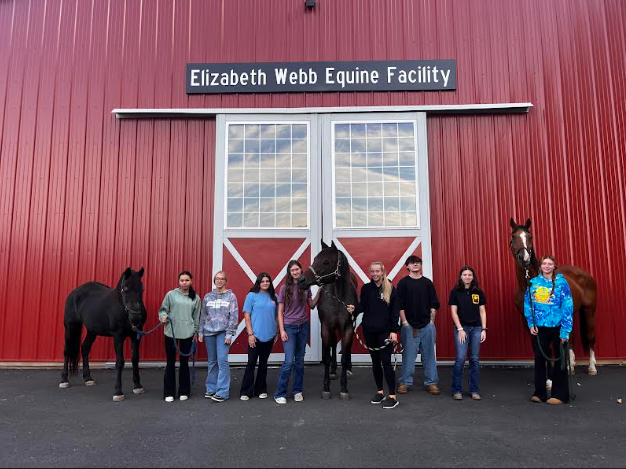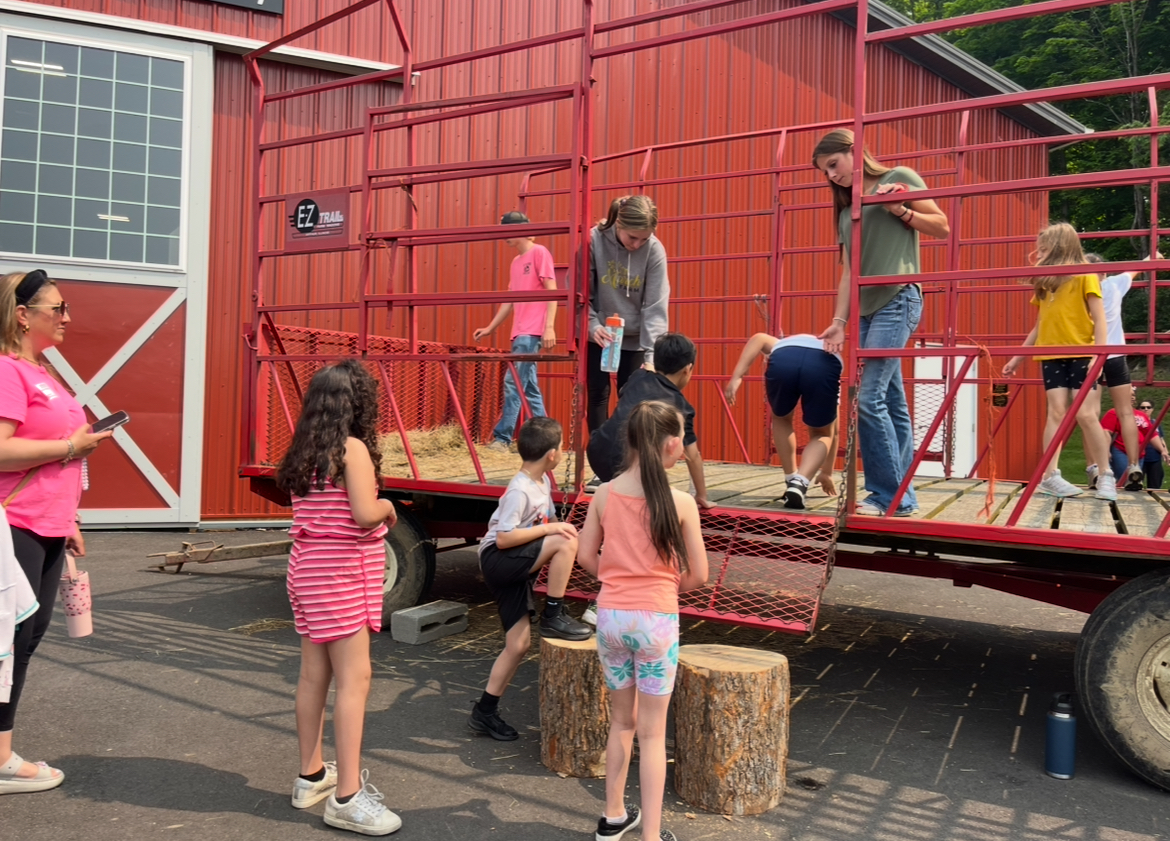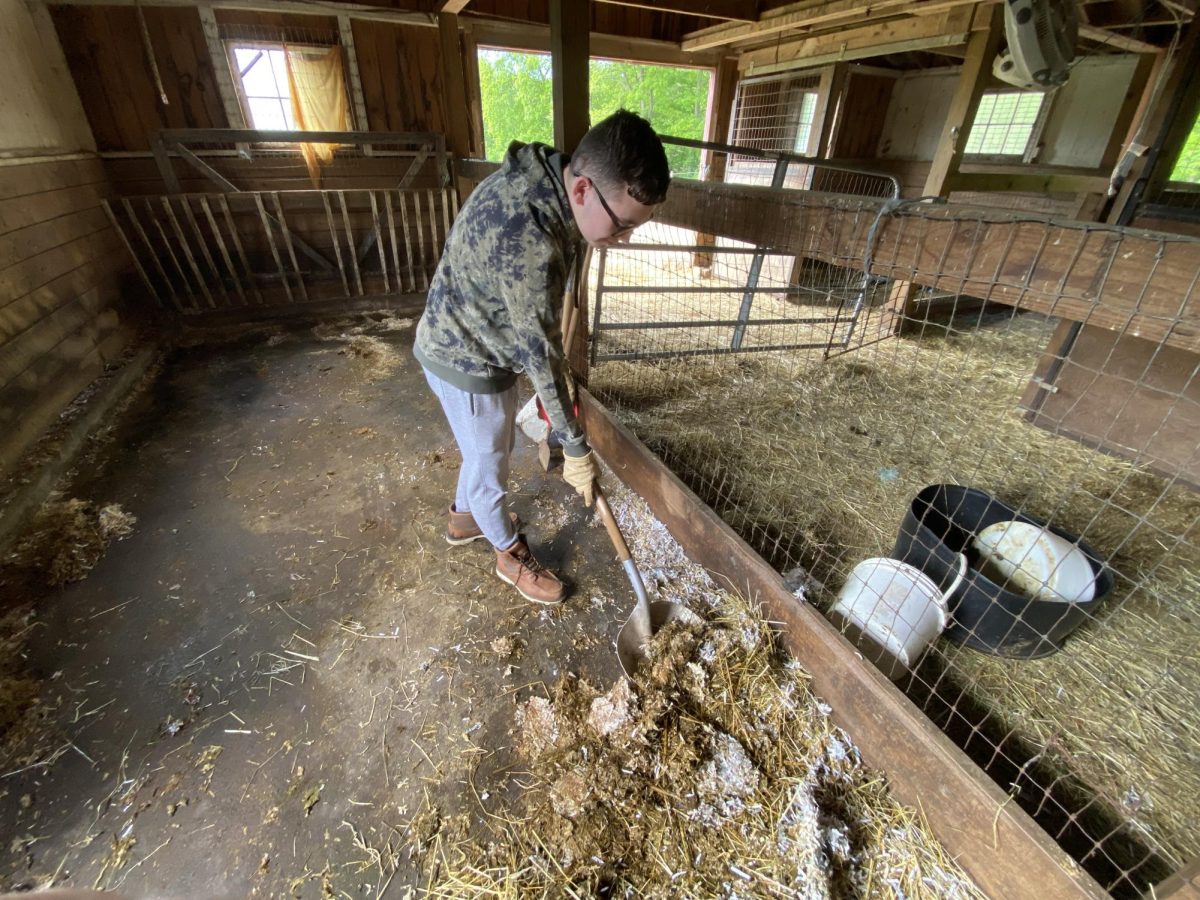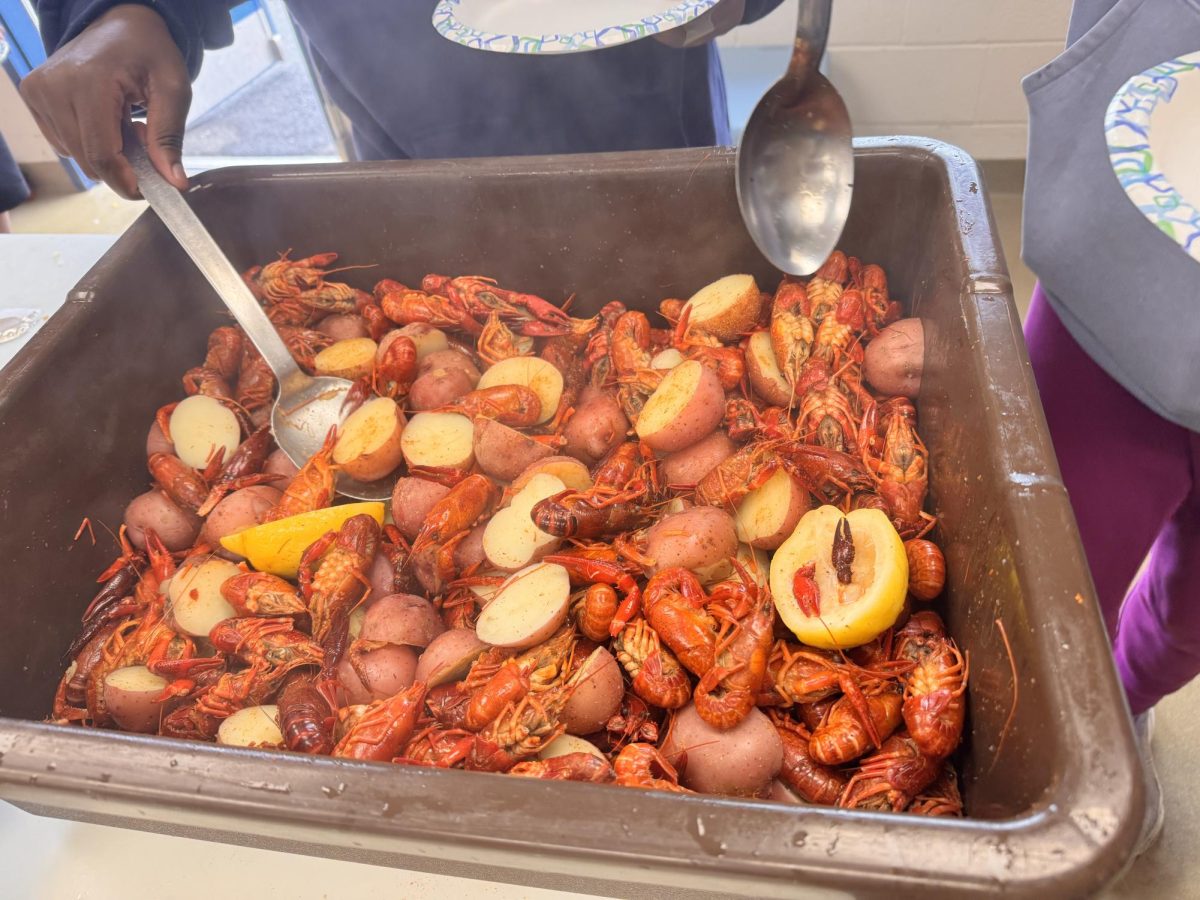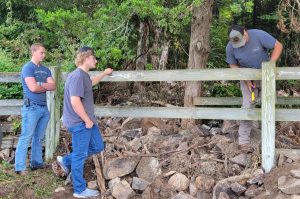
WOODBURY — New potholes catching people by surprise, sinkholes taking over entire roads, cars getting stuck on sides of roads, parts of houses floating away. The Aug. 18 floods left many people questioning how something like this could even happen.
Nonnewaug welcomed new faces into their school on Aug. 28, but for a few classes in the agriscience department, the start to their year might not have been what they expected.
In Katie Gorman’s agricultural production class, students quickly realized how much work they were going to need to do to recover from flood damage. Starting by cleaning up some of the debris of trees and rocks, everybody had a job.
“So whereas with natural resources and mechanics, they’re looking, is it clear? Can we get the fence line up? Is it safe footing? Is it access to water?” says Gorman. “So I have a different perspective because they are animal spaces, and I know that animals have to go in there, and especially now with the new horse barn coming up, I actually have to be more considerate of what a cow can get through is not always what a horse can get through, because horses may start to use that pasture more.”
“It’s a lot of slow and steady,” Gorman concluded.
It is going to take a while to be where everything was before, but with time and helpful hands, the agriscience classes are hoping to fix everything and make it better to prevent more damage in the future.
On the other side of the building, Andrew Zielinski and his mechanics class are busy using the larger machines to help out in areas that most need it.
“Using the tractor and other equipment, [my classes] have been able to help move a lot of the rocks that got washed out from the stream,” says Zielinski, the agriscience mechanics instructor. “[My classes] are trying to open these back up for their production classes, they are also trying to fix the fencing as well as the [cattle] chute.”
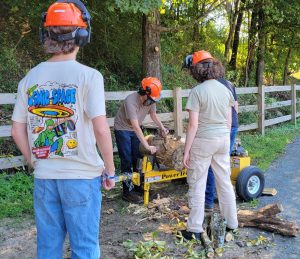
Together everybody is making this huge mess a more manageable task while working together and taking it piece by piece. The director of agriscience, Lee McMillian, explained the damages caused by the flooding and how classes are able to come together to help clean up the mess and how to make it better to prevent damages from being this bad in the future.
“We have a stream that flows from down below, and it flows down by the lower pastures,” McMillan said. “It’s just a little tributary that goes right through; it cuts right through the horse paddock. So what ended up happening was the rush of water kind of pushed all the rock and debris down to where our horse paddock is, and all that debris kind of backed up and forced the water to split off, and it ended up flooding up the hill as well as flooding our lower pasture.
“It flooded where our vegetable garden is,” she continued. “It flooded where our winter pasture is for the cows; it dumped a whole bunch of rock material all over our pastures. Some of our fencing got bent or destroyed because of it. It wasn’t accessible to get down to our animals for quite a bit. So it did a lot of damage, and what ended up happening was, because of that rock material, the water started flowing in different directions. So we ended up hiring a company that came over here right after the storm damage, an excavating company that helped to repair the flow of water so it cleared all the rock and debris and helped to create that flow back again through the horse pasture.”
The repairs are not going to be easy, but with each class taking on an important role, the program is looking forward to having everything done and functional again.
“The natural resources class, the ag production class and the ag mechanics class all came together,” McMillan adds. “Natural resources took down the fallen trees with the chainsaws, we cut up all of the debris, which actually provides us with some firewood for maple season. Ag production helped to fix the fencing. They cleared the debris around the fencing. They kind of cleared the area where the horses go, especially in the winter time, to access water and ag mechanics was phenomenal. They took the tractors, pushed back all of the rock material. They are also trying to fix the fencing down by the lower pasture. They’re using the post hole diggers to put in the new fencing line. So it’s kind of a nice little joint effort to get our pastures down below back up and running again.”
